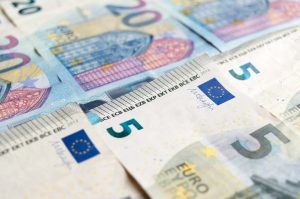Forex, short for foreign exchange, is the largest financial market in the world. It involves the buying and selling of currencies, with the aim of making a profit from the exchange rate fluctuations. One question that many traders face is how many currencies they should trade. In this article, we will explore this topic in-depth and provide some guidelines to help you make an informed decision.
The first thing to consider when deciding how many currencies to trade is your trading strategy. There are different strategies that traders use, and each may require a different number of currencies. For example, a scalping strategy involves making quick trades in the market, often within minutes or seconds. This type of strategy may require the trader to focus on a few currencies only, as they need to react quickly to market movements. On the other hand, a position trading strategy involves holding trades for a longer time, sometimes for weeks or months. This type of strategy may require the trader to diversify their portfolio and trade multiple currencies to spread the risk.
Another factor to consider is your level of experience and expertise. If you are new to Forex trading, it may be better to start with a few currencies only, as it can be overwhelming to keep track of too many currencies and their movements. As you gain more experience and knowledge, you can gradually increase the number of currencies you trade. It is important to remember that Forex trading requires constant learning and adaptation, so be prepared to adjust your strategy as needed.
One common guideline that traders use is to focus on the major currency pairs. These are the most traded currencies in the world, and they include the US dollar, Euro, Japanese yen, British pound, Swiss franc, Australian dollar, Canadian dollar, and New Zealand dollar. These currencies are highly liquid, which means that they are easy to buy and sell in the market. They also tend to have lower spreads, which is the difference between the buying and selling price of a currency pair. This makes them attractive to traders who want to make quick profits.
Another guideline is to consider the economic and political factors that affect each currency. Each currency has its own set of fundamentals, such as interest rates, inflation, GDP, and political stability. These factors can have a significant impact on the exchange rate of a currency pair. For example, if a country raises its interest rates, its currency may appreciate against other currencies as investors seek higher returns. Conversely, if a country experiences political instability, its currency may depreciate as investors lose confidence in its economy. By understanding these factors, traders can make informed decisions about which currencies to trade.
In addition to the major currency pairs, there are also minor and exotic currency pairs that traders can consider. Minor currency pairs include currencies from smaller economies, such as the Singapore dollar or Mexican peso. Exotic currency pairs include currencies from emerging markets, such as the South African rand or Turkish lira. These pairs tend to have higher spreads and lower liquidity, which means that they may not be suitable for all traders. However, they can also provide opportunities for higher profits, as they may experience more significant price movements than the major pairs.
Ultimately, the number of currencies that you trade will depend on your individual goals, strategy, and risk tolerance. It is important to remember that Forex trading carries a high level of risk, and you should only trade with money that you can afford to lose. By following these guidelines and constantly learning and adapting your strategy, you can increase your chances of success in the Forex market.





